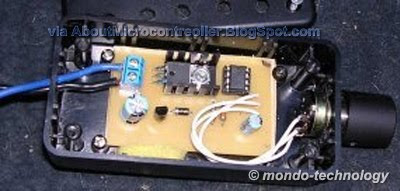Reliability-Based Design Optimization of Robotic System Dynamic PerformanceAbstractIn this investigation a robotic system’s dynamic performance isoptimized for high reliability under uncertainty. The dynamic capabilityequations (DCE) allow designers to predict the dynamicperformance of a robotic system for a particular configurationand reference point on the end-effector (i.e.,point design). Herethe DCE are used in conjunction with a reliability-based designoptimization (RBDO) strategy in order to obtain designs withrobust dynamic performance with respect to the end-effector referencepoint. In this work a unilevel performance measure approach(PMA) is used to perform RBDO. This is important forthe reliable design of robotic systems in which a solution to theDCE is required for each constraint call. The method is illustratedon a robot design problem.
Velocity Effects on Robotic Manipulator Dynamic Performance
Abstract
Background. This article explores the effect that velocities haveon a nonredundant robotic manipulator’s ability to accelerate itsend-effector, as well as to apply forces/moments to the environmentat the end-effector. This work considers velocity forces, includingCoriolis forces, and the reduction of actuator torque withrotor velocity described by the speed-torque curve, at a particularconfiguration of a manipulator. The focus here is on nonredundantmanipulators with as many actuators as degrees-of-freedom.Method of Approach. Analysis of the velocity forces is accomplishedusing optimization techniques, where the optimizationproblem consists of an objective function and constraints whichare all purely quadratic forms, yielding a nonconvex problem.Dialytic elimination is used to find the globally optimal solutionto this problem. The proposed method does not use iterative numericaloptimization methods.

more pdf
Dynamic Performance as a Criterion for Redundant Manipulator Control
Abstract
Kinematically redundant manipulators havebeen proven to offer certain advantages over more heavilyconstrained systems. One such advantage is the extra degreesof-freedom can be used for other tasks such as maintaininga posture which affords higher acceleration capability in thedirection of the desired motion. However certain issues arisewhen considering the control of these mechanisms due tothe lack of invertability of the rectangular Jacobian matrix.Here this issue is addressed by augmenting the rectangularJacobian with a characterization of the null space motions.This approach allows for a gradient-based control scheme,based upon the Dynamic Capability Equations, to increase ormaintain the local performance capability of a manipulator asit performs some task. Simulation results of the application ofthis control scheme to a six degree-of-freedom (DOF) planarmanipulator are given to illustrate the control’s advantageson a highly redundant system.
 more pdf
more pdfThe Actuation Effciency, a Measure of Acceleration Capability for Non-Redundant Robotic Manipulators
Abstract
This article presents a performance measure, the ActuationEffciency, which describes the imbalance betweenthe end-effector accelerations achievable in differentdirections of non-redundant robotic manipulators.A key feature of the proposed measure is thatin its development the differences in units betweentranslational and rotational accelerations are treatedin a physically meaningful manner. The measure alsoindicates oversized actuators, since this contributes tothe imbalance in achievable accelerations. The developmentof this measure is based on the formulation ofthe Dynamic Capability Equations. The shape of theDynamic Capability Hypersurface, which is desined bythe Dynamic Capability Equations, is a weak indicatorof the level of imbalance in achievable end-effectoraccelerations.
The Dynamic Capability Equations: A New Tool for Analyzing Robotic Manipulator PerformanceAbstract
The Dynamic Capability Equations (DCE) provide anew description of robot acceleration and force capabilities. Theserefer to a manipulator’s ability to accelerate its end-effector,and to apply forces to the environment at the end-effector. Thekey features in the development of these equations are that theycombine the analysis of end-effector accelerations, velocities andforces while addressing the difference in units between translationaland rotational quantities. The equations describe themagnitudes of translational and rotational acceleration and forceguaranteed to be achievable in every direction, from a particularconfiguration, given the limitations on the manipulator’s motortorques. They also describe the effect of velocities on thesecapabilities contributed by the Coriolis and centrifugal forces, aswell as the reduction of actuator torque capacity due to motorspeed. This article focuses on non-redundant manipulators withas many actuators as degrees-of-freedom.

more pdf
Non-Redundant Robotic Manipulator Acceleration Capability andthe Actuation Efficiency Measure
Abstract
This article presents a performance measure, the actuationeficiency, which describes the imbalance betweenthe end-effector accelerations achievable in differentdirections of non-redundant robotic manipulators.A key feature of the proposed measure is that inits development the unitam differences between linearand angular accelerations are treated in a physicallymeaningful manner. The memure also indicatesoversized actuators, since this contributes to the imbalancein achievable accelerations. The developmentof this measure is based on the formulation of theDynamic Capability Hypersurface. The shape of thishypersurface is a weak indicator of the level of imbalancein achievable end-effector accelerations.
more pdf
SOME PROBLEMS OF MANIPULATOR MOTION CONTROL
The purpose of manipulator control is tomaintain the dynamic response of a computer-basedmanipulator in accordance with some prespecifiedsystem performance and desired goals. In general,the dynamic performance of a manipulator directlydepends on the efficiency of the control algorithmsand the dynamic model of the manipulator. Thecontrol problem consists of obtaining dynamicmodels of the physical robot arm system and thenspecifying corresponding control laws or strategiesto achieve the desired system response andperformance.
 The Heater Fan Controller built around PIC12F675 microcontroller. It reads the (10k) linear potentiometer and generates appropriately timed pulses to control the DC motor running the fan. The extreme low position cuts the power entirely. This device work as a variable speed control for the heater blower in a car. The project is powered from the existing wiring and connects with just 2 wires. Or you can connect it to 12 volt device up to 10 amps.
The Heater Fan Controller built around PIC12F675 microcontroller. It reads the (10k) linear potentiometer and generates appropriately timed pulses to control the DC motor running the fan. The extreme low position cuts the power entirely. This device work as a variable speed control for the heater blower in a car. The project is powered from the existing wiring and connects with just 2 wires. Or you can connect it to 12 volt device up to 10 amps.







